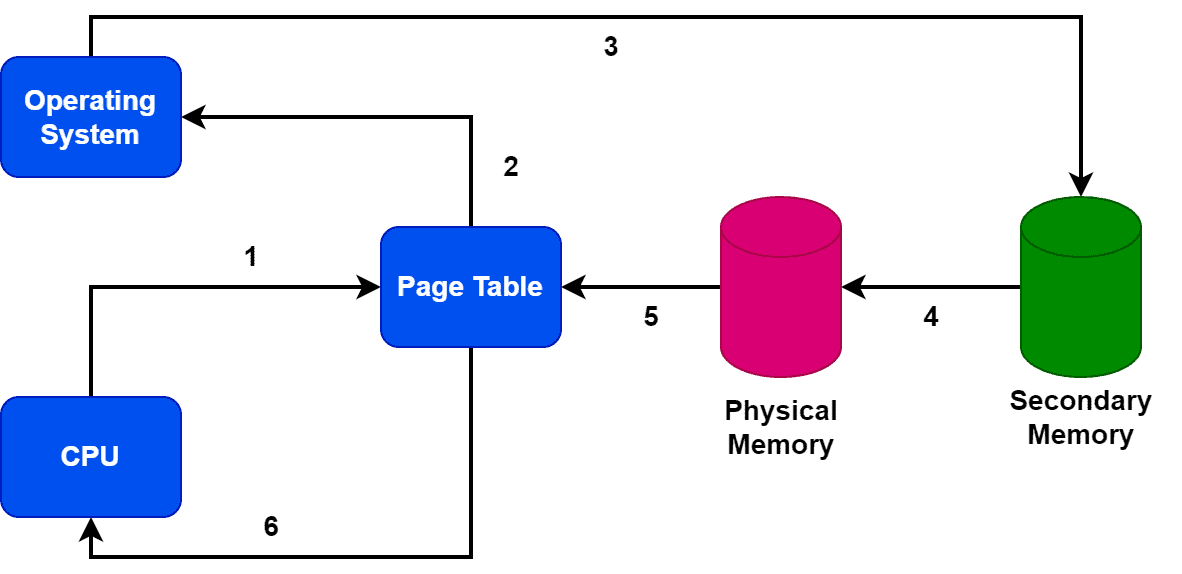1. Overview
In this tutorial, we’ll discuss a memory management technique: demand paging. We’ll demonstrate how the demand paging technique works. Additionally, we’ll highlight some advantages and disadvantages of this technique.
Finally, we’ll present some important applications of the demand paging technique.
2. Introduction to Demand Paging
Demand paging is a memory management technique used by operating systems to optimize the use of memory resources. In demand paging, we only load the required pages of a process into the main memory instead of loading the entire process.
When we first load a process into memory, only the pages that are necessary for the initial execution of the program are loaded. As the program runs, we bring additional pages into memory on demand as needed. Hence, this allows the operating system to optimize memory usage. Additionally, it doesn’t have to load all the pages of a program into memory at once.
Demand paging allows the system to swap out pages that are not currently in use, freeing up memory for other processes. When a page that has been swapped out is needed again, the system can bring it back into memory. Therefore, the main motivation behind demand paging is to reduce the time taken for process initialization. Additionally, it also helps to reduce the memory requirements for a process.
The demand paging technique is commonly used in modern operating systems, including Windows, Linux, and macOS.
3. Working Procedure
Let’s discuss how the demand paging technique works:

Let’s say the CPU wants to access a page for a specific process. The first step is to look for the required page in the page table. Suppose we find the required page in the page table. Therefore, the CPU access the page and forwards it to the process. However, if we can’t find the target page, the page table generates a trap or page fault signal. Furthermore, the page table sends the signal to the operating system. This’s where we apply the demand paging technique.
The demand paging technique involves six steps:

The first step is to handle the page faults. A page fault is generated when a process attempts to access a memory address or a page that isn’t currently available on the main memory. Hence, the operating system must handle this page fault and load the required page from secondary storage into memory.
Additionally, if the system doesn’t have enough free memory to load the requested page, it must select a page to evict from memory to make room for the requested page. Furthermore, the system uses a page replacement algorithm in order to select the page to evict.
The next step is to manage the page table. Hence, the operating system must maintain a page table for each process, which maps virtual pages to physical pages. Additionally, the operating system must update the page table whenever a page is loaded or evicted from memory. Furthermore, we must allocate memory for each process and manage the allocation of physical memory to virtual pages.
When the operating system evicts a page from memory, it’s typically swapped to disk to make room for other pages. Additionally, the operating system must manage the swapping of pages between memory and disk. Finally, The OS needs to determine when to load pages into memory and when to evict them based on the current workload.
Overall, demand paging requires complex algorithms and data structures to manage memory efficiently and ensure that processes have the memory resources they need to execute.
4. Advantages and Disadvantages
Now let’s explore some crucial advantages and disadvantages of the demand paging technique:
5. Applications
Let’s look at some essential applications that utilize the demand paging technique.
The first application is web browsing. When we open a web browser, it loads the browser application into memory. As we browse web pages, the browser only loads each page into memory when needed. Hence, this allows the browser to use less memory, as it doesn’t need to load all pages simultaneously.
Operating systems use demand paging to implement virtual memory. Each running process in virtual memory has a unique address space divided into pages. If a process requires a page that’s not already present in the physical memory, the operating system loads the page into physical memory from the disk on demand.
We can also use the demand paging technique in gaming. Modern video games use demand paging to load game data into memory. For example, when a player enters a new area of a game, the game loads the data for that area into memory.
6. Conclusion
In this tutorial, we discussed a memory management technique: demand paging. We demonstrated how the demand paging technique works. Additionally, we highlighted some advantages and disadvantages of this technique. Finally, we presented some important applications of the demand paging technique.